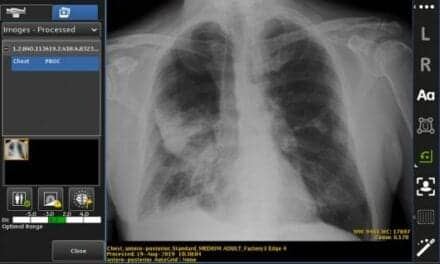Exploring—and Explaining—Radiology in the Age of AI
By Chaunie Brusie
Matthew P. Lungren, MD, MPH, associate director of the Stanford Center for Artificial Intelligence in Medicine and Imaging and assistant professor, clinician scientist, at Stanford University Medical Center, is a man on a mission. His pursuit? To bring the mystery of the world of artificial intelligence (AI) into the realm of realism in radiology.
To Lungren, the hype of AI seemed to take many by surprise as recently as two years ago, but now, he is seeing a shift in how radiologists and other health professionals are viewing the technology. Along with what he describes as “healthy curiosity and skepticism” about AI, Lungren is seeing more physicians who are seeking to understand more fully how AI will change their work in the future—and how they can take action now to prepare and contribute to shaping how those changes will look.
Spotlight on AI
To that end, Lungren has been working as one of the organizers of the Radiological Society of North America (RSNA) spotlight course on artificial intelligence, to be held May 31-June 1 in San Francisco. The course, says Lungren, will be focused at a very practical level on helping radiologists understand how AI is impacting the field presently and how it will impact it in the future, along with shining a spotlight on all of the different pieces of AI, from model development to regulatory ethics.
“The purpose is to boil it down into manageable chunks of information so you can walk away saying, ‘OK, I know what this is. It’s not too scary, and I’m ready to get involved in my practice or institution,” he explains. He adds that one key takeaway from the conference will include clinician-led examples of AI at work, with real-life applications and opportunities for other clinicians to get involved or learn more about tools that they can use in their own practices.
In Lungren’s eyes, it’s those opportunities that are the heart and soul of innovation, whether it’s through AI or something else altogether. “If there is a tool that you can bring to the medical community, we would take it because we’re all looking for a solution to reduce the difficult work we do every day and come up with better patient outcomes, in general,” he says.
A Global Reach
Through his own work and his work with RSNA, which he leans on as a reliable and trustworthy source in the sometimes-unfortunate mass of misinformation about AI, Lungren has seen the opportunities that AI holds firsthand. He points to the potential that AI solutions could hold, for instance, in resource-poor areas of the world, or in areas lacking physicians or other medical professionals. “A lot of people at the conference are going to be surprised to see how far this can reach,” he adds.
On a more local level, Lungren adds that, from his own perspective, integrating AI has been a “transformative line of research,” because it has expanded the concept of bench to bedside by leaps and bounds. Whereas, in the past, applying a new concept through research could take a decade into application, AI can cut the process down to less than a year or two, allowing teams to develop, train, test, and potentially deploy all within two to three years of clinical testing. “That’s a really exciting thing for me,” Lungren says.
Translating that excitement over the potential of AI will be one of the components of the spotlight course—but additionally, Lungren explains that the purpose of the conference is to enable attendees to get the information they need; the organizers have purposely tailored the talks to be shorter in length, with ample time for discussion afterward. “To me, that’s the most informative part,” he says.
Chaunie Brusie is associate editor of AXIS Imaging News. Questions and comments can be directed to [email protected].






